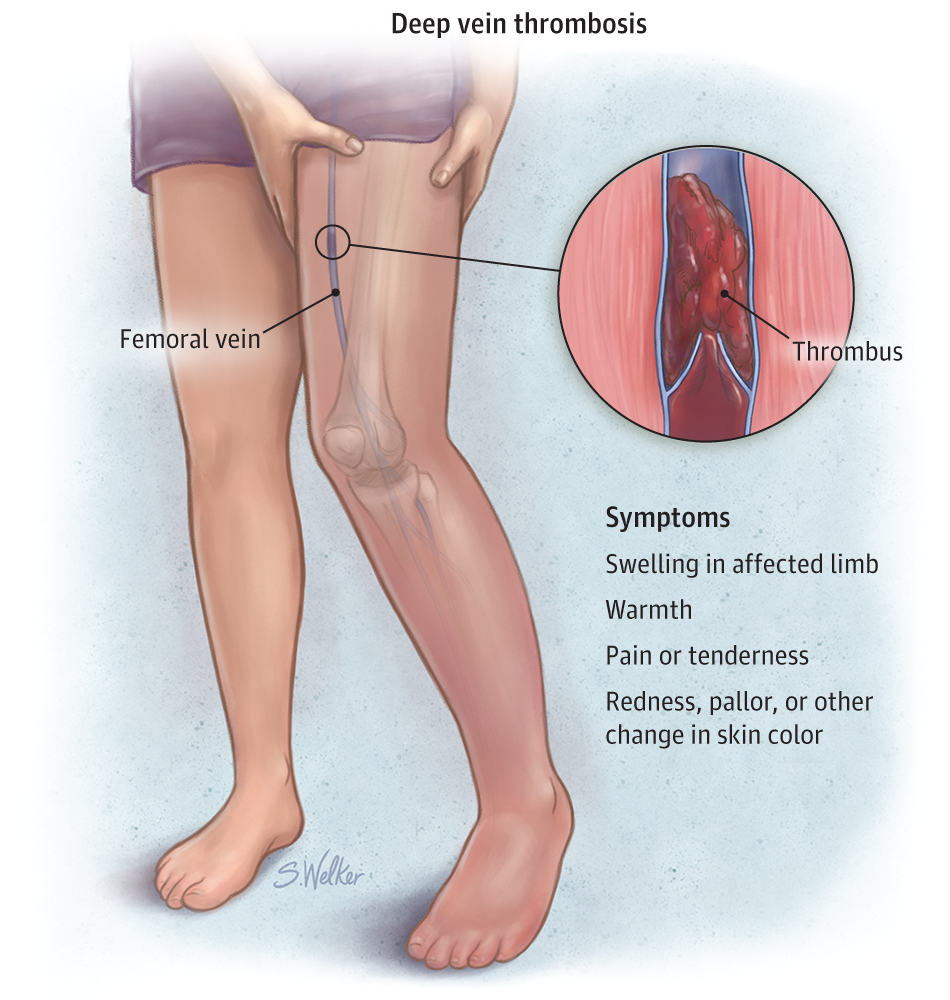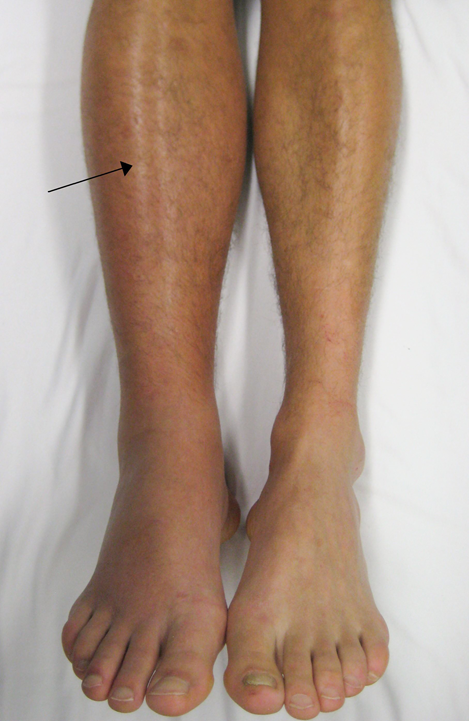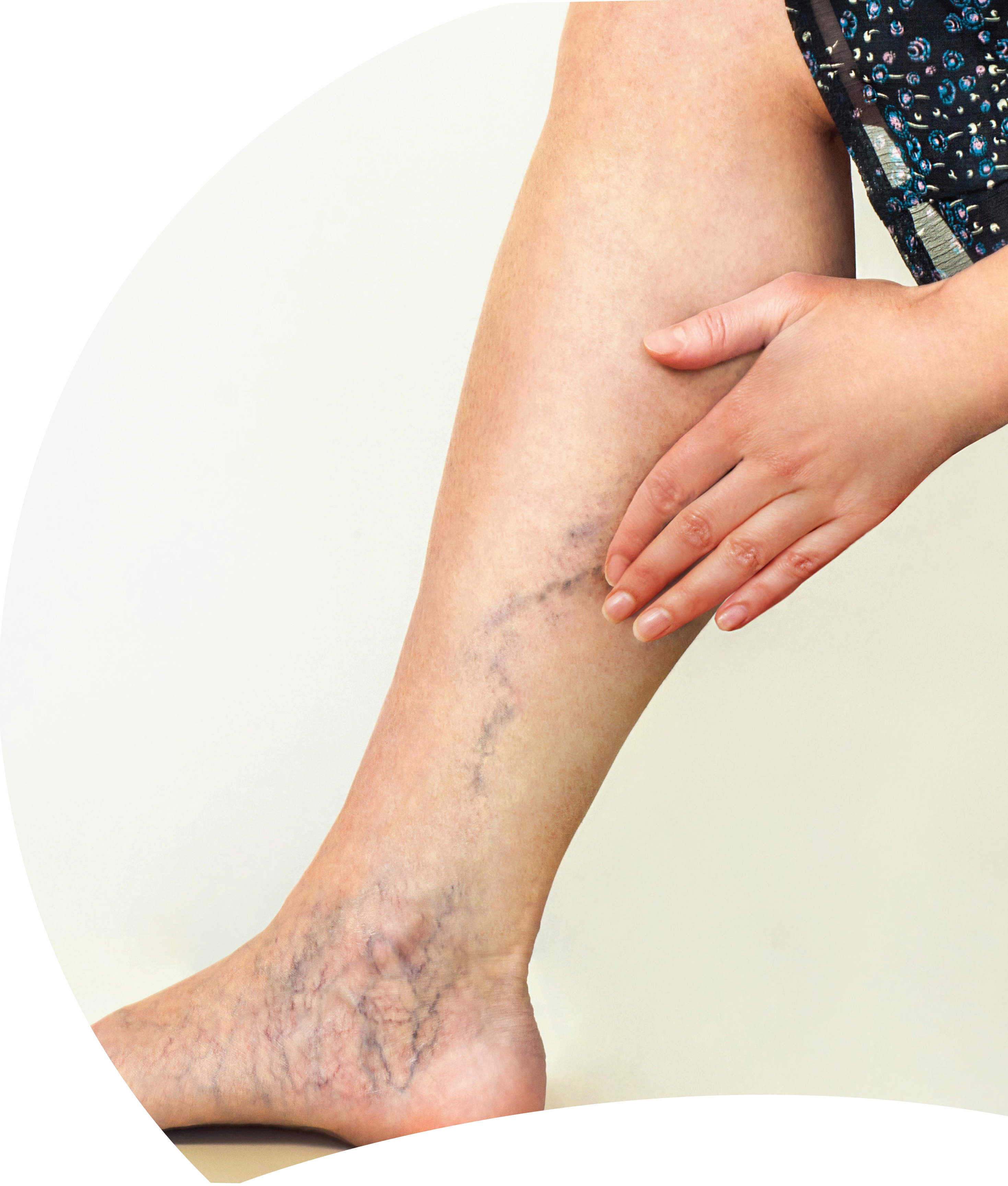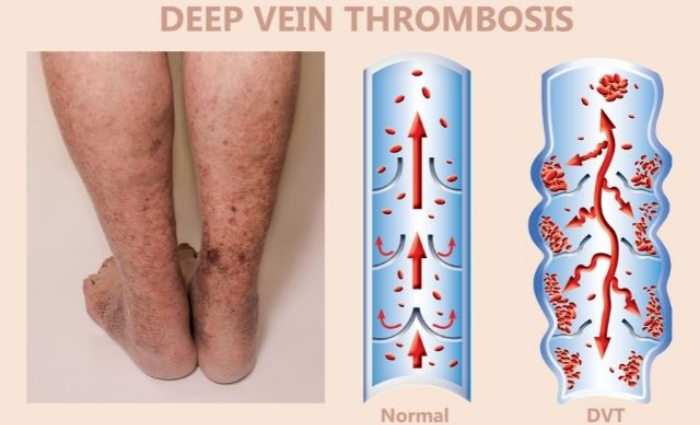A Dvt That Embolizes Can Cause Which of the Following
A DVT Is A Blood Clot Which Can Travel To The Lungs And Lead To A PE. Ad Get The Facts About Deep Vein Thrombosis Pulmonary Embolism Discover Common Symptoms.

Deep Vein Thrombosis Center For Vein Care
Blood clots occurring in a vein can lead to DVT or pulmonary embolism.

. This is known as a pulmonary embolism PE. An arterial embolism is a blood clot that has travelled through your arteries and become stuck. Blood clot Blood clots often from a deep vein thrombosis are the most common cause of a pulmonary embolism.
In a broader sense it can also be defined as a change in the pulmonary vascular impedance in certain regions which comes from anomalies in the lumen or the walls of pulmonary vessels. VTE is often recurrent and long-term. Blood clots can also occur after childbirth following a heart attack during post-surgical recovery or through long periods of inactivity.
March 30 2006 -- Acute infections may make two blood clotting conditions -- deep vein thrombosis DVT and pulmonary embolism -- more likely. The most common cause of such a blockage is a blood clot that forms in a deep vein in the leg and travels to the lungs where it gets lodged in a smaller lung artery. Deep vein thrombosis DVT is a type of blood clot thats significantly more common in pregnant women and can lead to a more serious condition known as pulmonary embolism PE.
Many people develop blood clots and there are many types and causes of thrombosis and embolism. Pulmonary Embolism PE Part of a blood clot in a vein DVT can travel through the bloodstream to the lungs. But a large clot can stop blood from reaching the lungs causing death.
Sometimes VTE occurs without any obvious signs. If you have had a DVT or pulmonary embolism or you have a family history of blood-clotting problems you can help prevent blood clots. Follow the treatment.
Pulmonary embolism symptoms include. Medicines that help prevent further blood clots from forming or that dissolve serious vein blockages are the main treatments for VTE. Which of the following isare major mechanisms that contribute to the pulmonary hypertension commonly seen in a patient with a pulmonary embolism.
Deep vein thrombosis DVT is a condition in which a blood clot develops in the deep veins most commonly in the lower extremities. If a blood clot travels to the brain this causes an ischemic stroke or TIA transient ischemic attack. In pulmonary embolism a blood.
It can damage the lung and other organs and cause heart failure too. A block in blood flow in a deep vein large artery or pulmonary lung blood vessel carries the. A deep vein thrombosis usually develops in the lower extremities and may remain stable until the bodys own mechanism resolves it.
Small clots that wouldnt block a major artery can block the smaller blood vessels feeding the retina at the back of the eye. Pulmonary embolism is caused by a blocked artery in the lungs. Venous thromboembolism VTE refers to DVT PE or both.
This is known as pulmonary infarction. Clots generally affect the arms legs or feet. On the other hand part or all of such a blood clot can spontaneously dislodge and within moments plug up a vein in the lungs pulmonary embolism causing shortness of breath or in the worst case scenario immediate death.
Most moms with blood clotting conditions have perfectly healthy pregnancies and deliveries. Almost all blood clots that cause pulmonary embolism are formed in the deep leg veins. Researchers report the news in The Lancet.
A PE can be life-threatening so if youve been diagnosed with DVT you should be aware of this risk. Reflexes from the aortic and carotid sinus baroreceptors 4. A Cancer cells B Plaques C Blood clots D All of the above.
Causes The most common cause of a pulmonary embolism is deep vein thrombosis. What Health Problems Can DVT Cause. Rarely bone marrow amniotic fluid air bubbles oxygen bubbles and other things can also get into the circulatory system and cause a pulmonary embolism.
Swelling redness and pain are some of the symptoms of deep vein thrombosis. In many cases a pulmonary embolism is caused by more than one clot blocking the artery. The portions of lung served by each blocked artery are robbed of blood and may die.
In many cases multiple clots are involved in pulmonary embolism. A pulmonary embolism occurs when a part of the clot breaks off and travels to the lungs a potential life threat. People can recover from this if the clot is small and they get the right treatment.
Fortunately DVT and PE are treatable and even preventable among women who are most at risk. Deep vein thrombosis may cause the following to occur around the area of a blood clot. Vasoconstriction induced by alveolar hypoxia 3.
Pulmonary embolism can be a life-threatening condition. There are different clinical situations that cause pulmonary vascular disease where gas exchange can be evaluated using the multiple elimination techniques. DVT is characterized by a blood clot in a deep vein usually in the leg pelvis or arm.
Decreased cross-section area of the pulmonary vascular system 2. A pulmonary embolism can cause sudden chest pain and shortness of breath. As mentioned these clots form in the calves and break free traveling to the lungs.
These blood clots most commonly come from the deep veins of your legs a condition known as deep vein thrombosis DVT. This can block or restrict blood flow. One of the complications of surgery is immobility during or following a surgical procedure that may contribute to blood clot development in the legs known as a deep vein thrombosis for DVT.
Increased warmth cramps or aching in the area that is swollen or painful usually the calf or thigh. Ask your doctor if you have any risk factors for blood clots that can be changed. Red or discolored skin.

Deep Vein Thrombosis Preferred Vascular Group

What Is Deep Vein Thrombosis Dvt Diagnosis Treatment Center

The Top 3 Warning Signs Of Dvt Deep Vein Thrombosis Vascular Interventional Specialists Of Prescott
Comments
Post a Comment